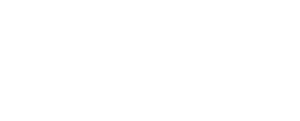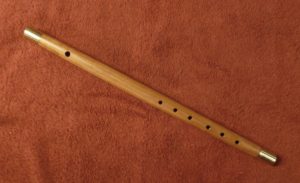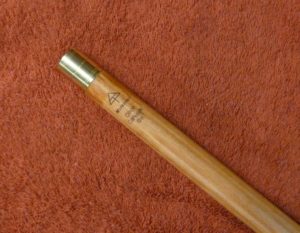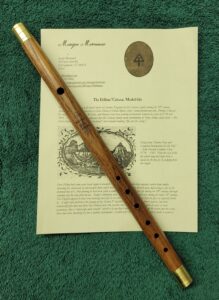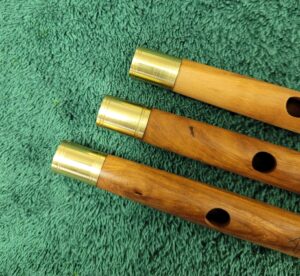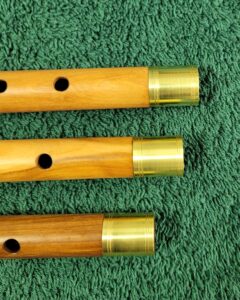Military-style, historical, traditional… Fifes for fife & drum corps, for folk music, for historical dance.
Models available on this page below:
- The Dillon/Cahusac model
- The Cavalier Model
- The Callender 1787 Model
- The Williamsburg Pitch Model
- The French 1790 Model
- The Ralph G Sweet Colonial Model
- The Cloos Model
- The 1815 N’Orleans Model
- The 1759 Ingolstadt Model – Bavarian pfeife
Historical Models
The fife dates back, as far as we have been able to ascertain, to Europe around the 12th century. That is not very clear, for it is a form of flute and flutes of varying forms are much, much older. But the fife as distinct from the transverse (or horizontally held) flute certainly comes about around that time. It is, in essence, what might be termed a “tabor pipe with benefits”; it consisted of a tube, almost always of wood, with a very tight bore meant to sacrifice the tone and volume of the lowest register to favour the second and third registers which, when played, carry quite the distance and could be heard over other, loud instruments such as its traditional association with the side or field drum. Its obvious application was for martial use in providing recognizable tunes in company with the drum for military “camp duties” and specific “calls” during battle wherein troops could hear the commands without necessarily seeing the commander… Serving the purpose of radio communication, as it were. But it also was known for folk dance music as well as work accompaniment music much like the pipe and tabor and can actually still be found in this capacity in some remote villages throughout western Europe. As the transverse flute began to evolve, so too the fife which eventually became the piccolo, the instrument of choice in fife and drum music cultures such as for the Swiss Fasnacht. In fact when performing on any fife one might benefit from regarding it more as a piccolo than a flute.
For your amusement, although copyrighted and not for general public re-use. – YE ART OF YE FYFE
The traditional fife is an example of an instrument still reflecting the varying pitches of the 18th and 19th centuries… You might do yourself a service to read this. In the 18th century, it appears that most Anglo-American fifes were actually in the pitch of nominal C, with some lower pitches available but less common and more for parade and/or “pleasure” performances. French, German, Spanish, Dutch, Italian fifes appear to generally be in the pitch of nominally D, rising to a D# in today’s European fife culture. There are certainly exceptions to this, but the common use of Bb in Britain and America is really more of a 19th century development. You can read a source for some of this here, but also please do look at my page on “Fife tuning and pitch“.
Corps Discount for sets purchased – Please inquire!
MusiqueMorneaux@gmail.com or 860.749.8514
<< Je viens de recevoir le fifre aujourd’hui. Comme ceux-là, c’est vraiment génial et ça sonne très bien !! Vous devez dire sur votre site que je suis vraiment fan de votre travail !! >> Gilles Graimont, Paris, France
The Dillon/Cahusac Model Fife


1815 N’Orleans Model Fife.
Held at a research center in New Orleans is a little fife that had been donated by someone that claims it was used at the Battle of New Orleans in January 1815. It certainly has the look of something that had “gone through the war”, and is believed to have been carried by the fifer from the region about Kentucky or Tennessee. A friend brought this to my attention and took measurements; from this, I base our “N’Orleans Model Fife”. It follows the original rather closely based upon photos and measurements, minus the crushing cracks and the brass bands placed along the length – there’s some question that this was done to hold the instrument together from cracking, but I’m inclined to think that it was an aesthetic much like some of the models later offered by Crosby, Cloos, and a few other makers. Here, I don’t bother with the bands mostly because at this point it is an unnecessary expense for an otherwise fully functional fife. The original was not of Boxwood but of a domestic fruitwood, and here I made this set in Apple wood. The model is in C – as was most common in the 18th and turn of the 19th century, based upon surviving examples – and is an excellent choice for your War of 1812 impression. The head ferrule is slightly tapered while the foot ferrule is the more common “barrel” cylindrical, both brass; just like the original.
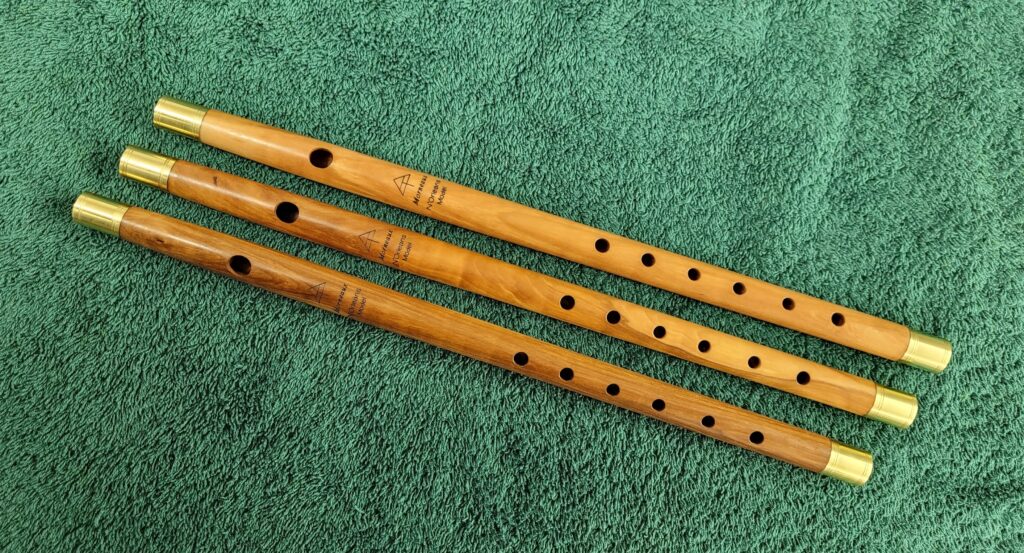
![]()
